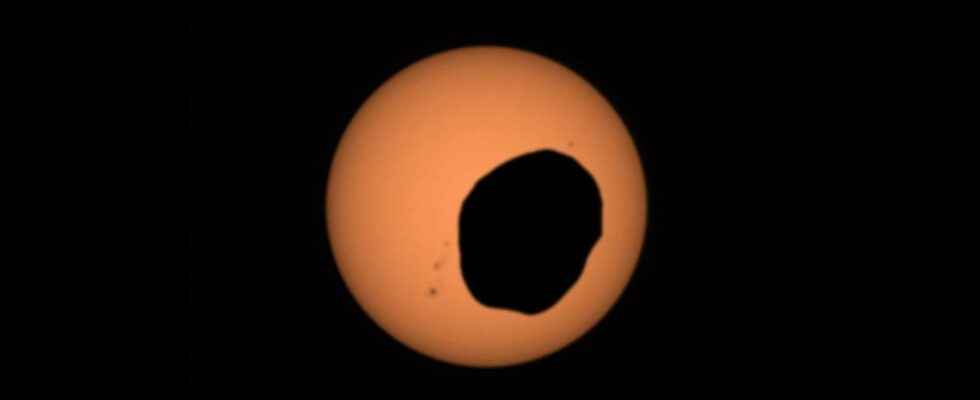This is not a solar eclipse as we are used to seeing on Earth, with a lunar disc — 400 times closer to us than the Sun and also 400 times smaller than it — completely, or almost, obscuring our Star for a few minutes, but it is no less beautiful and spectacular when observed on another planet like Mars. With the notable difference, of course, that Phobos (27 kilometers in diameter) does not completely hide thestar solar. It is rather a partial eclipse of the Sun. It passes in front in a short period of time. During these shots taken with the Mascam-Z instrument (Z for zoom) on April 2, the event observed from the region of the Jezero crater where Perseverance lasted “just over 40 seconds”report the Nasawhich adds that, of all the solar eclipses filmed for two decades by its various rovers on Mars (small Spirits and Opportunity to the biggest Curiosity and Perseverance), it is the first which is so zoomed, in high resolutionand with details that exceed all their expectations.
“I knew it was going to be good, but I didn’t expect it to be this amazing”, exclaimed Rachel Howson, who belongs to the team of the instrument. Thus we see the silhouette in Chinese shadow of the potatooid Phobos, with its irregular outlines, its reliefs. Furthermore, the solar disc, whose brightness is attenuated by a filter deployed on the camera, displays clearly visible dark spots, such as one can admire them in an instrument on Earth provided with adequate filters, or by an indirect projection, even when a haze in the morning the veil until only a pale star can be seen (reminder: never look at the Sun directly without approved protection).
The inexorable fall of Phobos on Mars
From its bleak plain on Mars — where water once flowed — where Perseverance is busy searching for possible ancient traces of life, the rover is also helping scientists better understand the interactions between the Red Planet and its two tiny moons, Phobos and Deimos (respectively the Fear and the Terror in Greek myths), the effects of tide they exert on his entrails. Observe the transits of Phobos helps researchers track its movements, fine-tune its orbit — just 6,000 kilometers above the surface of Mars! — which leads him inexorably towards its destruction and fall to Mars…within 50 million years.
Interested in what you just read?
